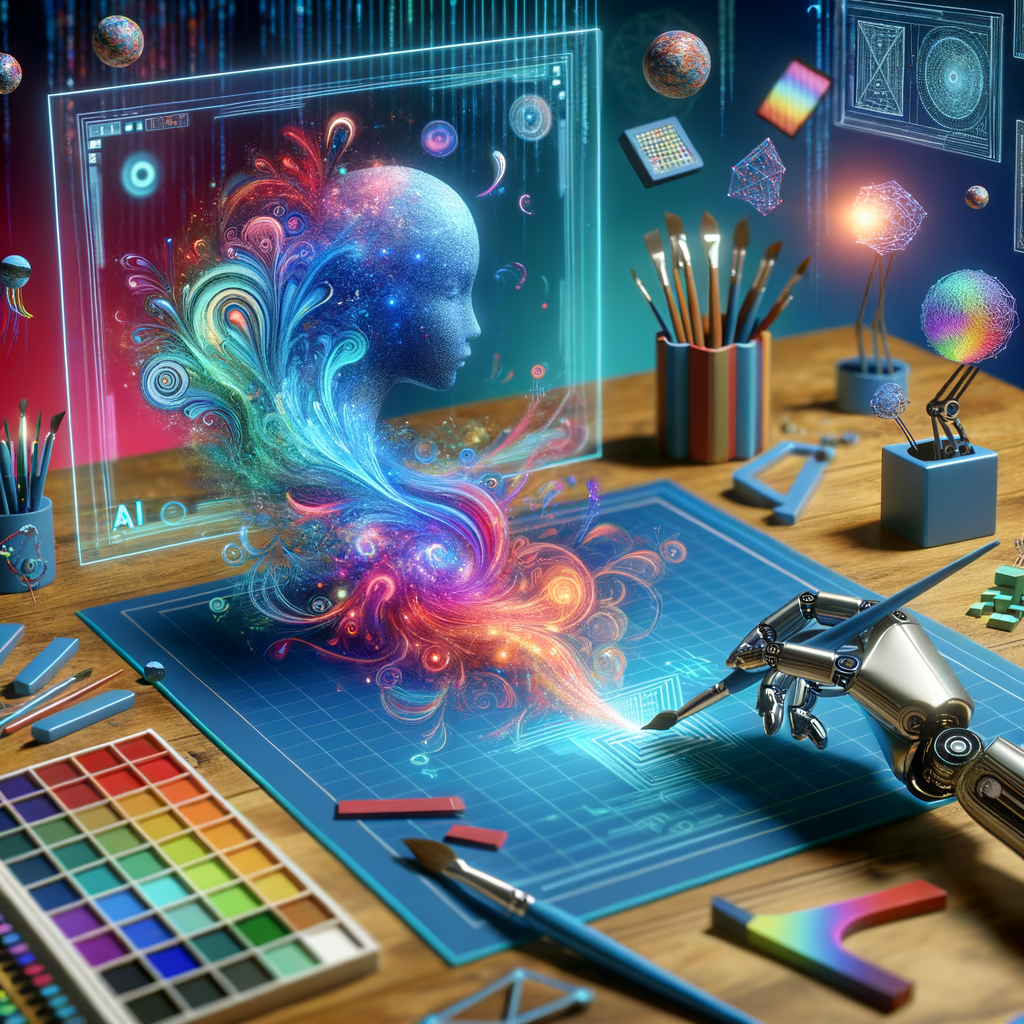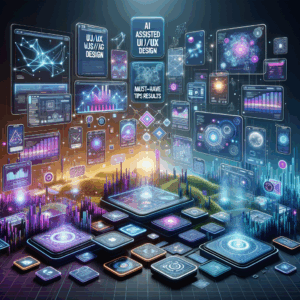
AI Revolutionizes Graphic Design: Stunning Transformations Await
- Introduction: The Graphic Design Landscape
- Transformative Tools Powered by AI
- 1. Design Software with Intelligent Features
- 2. Automated Content Creation
- Enhancing Creativity through Collaboration
- 1. AI as a Creative Partner
- 2. Learning from Data
- The Future of User Experience in Graphic Design
- 1. Customized Experiences
- 2. Accessibility in Design
- Designing for Multiple Platforms
- 1. Cross-Platform Consistency
- 2. Real-Time Updates
- Ethical Considerations in AI Graphic Design
- 1. Copyright and Originality
- 2. Transparency in Use
- The Evolution of Skill Sets
- 1. New Skills for Designers
- 2. Continuous Learning
- Conclusion: Embracing the Change
- FAQs
- 1. How will AI change the role of graphic designers?
- 2. Are AI-generated designs copyrightable?
- 3. Can AI fully replace human designers?
- 4. How can I learn to use AI in graphic design?
- 5. What are some popular AI tools for graphic designers?
- 6. How does AI improve user experience in design?
- 7. Are there ethical concerns related to using AI in graphic design?
- 8. Can AI help with social media graphics?
- 9. Will I still need traditional design skills if I use AI?
- 10. How do I ensure my designs remain unique when using AI?
- References
Introduction: The Graphic Design Landscape
Graphic design has always been a field blossoming with creativity and innovation. Today, artificial intelligence is poised to elevate this art form. By integrating machine learning, data analysis, and automation, AI transforms how designers create, visualize, and execute their ideas. This shift does not just make tasks easier; it also opens new avenues for creativity and efficiency.
Imagine a world where routine design tasks are automated, allowing artists to focus on the more imaginative aspects of their work. This transformation promises to enhance the capabilities of human designers while keeping the creative spark alive. In this article, we will explore how AI is revolutionizing graphic design, examining various applications, tools, and trends shaped by this technological advancement.
Transformative Tools Powered by AI
1. Design Software with Intelligent Features
Recent advancements in software have integrated AI tools that streamline the design process. Programs like Adobe Creative Cloud and Canva now offer suggestions for layouts, colors, and fonts based on the users’ previous designs. This intelligent assistance can speed up decision-making, letting designers experiment with different aesthetics.
For example, Adobe Sensei uses AI to analyze images and suggest edits that maintain the original intent. Whether you want to enhance a photo or create a complex graphic, these intelligent tools can help you improve your design quality quickly and effectively.
2. Automated Content Creation
Content creation is another area where AI shines. Tools like Daz 3D and Runway ML use machine learning to generate graphics and animations effortlessly. Designers can create stunning visuals without the need for extensive manual input. This capability allows for experimentation with different styles and concepts without consuming a lot of time.
The emergence of generative design is particularly noteworthy. AI can sample thousands of designs and produce new options that the designer may not have considered. The automation of repetitive tasks frees artists to focus on the more creative aspects of their work.
Enhancing Creativity through Collaboration
1. AI as a Creative Partner
Instead of viewing AI solely as a tool, it is essential to see it as a creative partner. Algorithms can analyze trends and inform designers about what’s popular in real-time. Knowing what resonates with the audience can guide the design process, making the final product more impactful.
Moreover, AI doesn’t stifle creativity; it enhances it. By generating a myriad of options, designers can explore ideas they might not have otherwise considered. This back-and-forth can lead to a richer, more innovative direction in projects.
2. Learning from Data
AI can also offer insights based on data analytics. Websites use AI to track user engagement and preferences, and designers can utilize this information. By understanding what works and what doesn’t, graphic designers can tailor their designs to maximize impact.
For instance, social media platforms have robust analytics tools. These can provide real-time feedback on how users interact with visuals. Understanding this data equips designers with the knowledge to enhance their graphic communication significantly.
The Future of User Experience in Graphic Design
1. Customized Experiences
As AI continues to develop, the capacity for customization enhances user experience. Machines can analyze user behavior to create tailored designs that meet individual preferences. This feature is valuable for branding, as personalized visuals create meaningful connections with the audience.
Imagine a landing page that adapts based on user preferences. An AI can analyze users’ past interactions to display graphics they are most likely to engage with. This level of customization improves user satisfaction and increases conversion rates.
2. Accessibility in Design
AI also plays a crucial role in making graphic design more accessible. Tools like automatic alt text generation for images help visually impaired users engage with content. This accessibility is essential in creating inclusive designs that consider a broader audience.
As AI continues to evolve, its role in enhancing accessibility will expand. Designers will have the ability to create content that is not only visually appealing but also usable by everyone.
Designing for Multiple Platforms
1. Cross-Platform Consistency
With the surge of digital platforms, maintaining visual consistency across devices and formats is critical. AI can automate the adjustment of designs for various platforms, ensuring that graphics look good whether on mobile, tablet, or desktop.
Tools incorporate AI to recommend design adjustments based on the platform. This functionality saves time and ensures the designer can maintain brand integrity across all mediums.
2. Real-Time Updates
Another fascinating aspect of AI is the ability to implement real-time updates. Designs can adapt instantly across various platforms, allowing businesses to react to trends and changes quickly. This flexibility is becoming essential in a fast-paced digital environment.
AI helps keep designs fresh and relevant to the audience. A designer can implement updates efficiently, ensuring that the visuals remain in tune with the times.
Ethical Considerations in AI Graphic Design
1. Copyright and Originality
As AI generates an increasing volume of content, questions around copyright and originality arise. Designers need to navigate their creative rights carefully. It remains crucial to understand what constitutes originality in a world where machines generate ideas.
While AI can assist in the design process, human creativity is the unique factor that distinguishes original work. Balancing AI’s capabilities while protecting artist rights is an ongoing conversation in the graphic design community.
2. Transparency in Use
It’s vital for designers to maintain transparency about using AI tools in their work. Being upfront about the extent to which AI influences a design can build trust with clients and audiences. Following ethical practices will help ensure the credibility of the designer’s work.
Additionally, fostering a community that respects copyright laws will benefit all involved in the creative industry. Cleaner standards will create a more reliable environment for designers, clients, and users.
The Evolution of Skill Sets
1. New Skills for Designers
As AI reshapes graphic design, the skill set required for designers is evolving. While traditional design skills remain valuable, familiarity with AI tools has become crucial. Designers should feel comfortable navigating AI-driven software, as these tools will become standard in the industry.
Learning how to work alongside AI amplifies creativity. Designers who embrace machine learning can often produce work that stands out in a crowded market. The ability to adapt will keep professionals relevant as technology continues to evolve.
2. Continuous Learning
Emphasizing continuous learning is vital in the rapidly changing design landscape. Online courses and workshops focusing on AI technologies can help designers keep their skills sharp. Staying informed about emerging tools ensures designers offer the most innovative solutions to their clients.
Professional growth also comes from collaborating with AI specialists. Fostering interdisciplinary collaborations can provide fresh perspectives and deepen understanding of how AI can enhance graphic design.
Conclusion: Embracing the Change
The intersection of AI and graphic design introduces a thrilling era for creatives. This transformation offers unprecedented opportunities for design efficiency and creativity. By welcoming AI into the creative process, designers can thrive in an ever-evolving industry.
As these advanced tools become commonplace, the landscape of graphic design will continue to shift. Designers who adapt, experiment, and embrace AI’s potential will lead the way in this exciting new frontier. The future is bright, and the possibilities are truly limitless.
—
FAQs
1. How will AI change the role of graphic designers?
AI will streamline many repetitive tasks, allowing designers to focus on creative aspects. Designers will need to adapt by learning to work with AI tools.
2. Are AI-generated designs copyrightable?
Copyright issues surrounding AI-generated content are complex. Typically, human input is required for a design to be deemed original and copyrightable.
3. Can AI fully replace human designers?
While AI can assist in many areas, it lacks the human creativity and emotional intelligence that are vital for impactful design.
4. How can I learn to use AI in graphic design?
You can enroll in online courses, attend workshops, or explore tutorials focused on AI tools in graphic design.
5. What are some popular AI tools for graphic designers?
Popular tools include Adobe Sensei, Canva, Daz 3D, and Runway ML, each offering unique features to enhance the design process.
6. How does AI improve user experience in design?
AI can personalize designs based on user preferences, ensuring more engaging and relevant experiences across platforms.
7. Are there ethical concerns related to using AI in graphic design?
Yes, concerns include copyright issues and the need for transparency about AI’s role in the design process.
8. Can AI help with social media graphics?
Absolutely! AI can automate the design process for social media, ensuring that content meets the platform’s specific requirements.
9. Will I still need traditional design skills if I use AI?
Yes, traditional design skills remain essential. Understanding design principles will help you effectively leverage AI tools.
10. How do I ensure my designs remain unique when using AI?
Incorporate your creative flair and insights into the design process. While AI can generate ideas, your unique perspective will keep your work original.
—
References
1. Adobe Creative Cloud
2. Canva
3. Daz 3D
4. Runway ML
5. Adobe Sensei
6. AI for Accessibility

